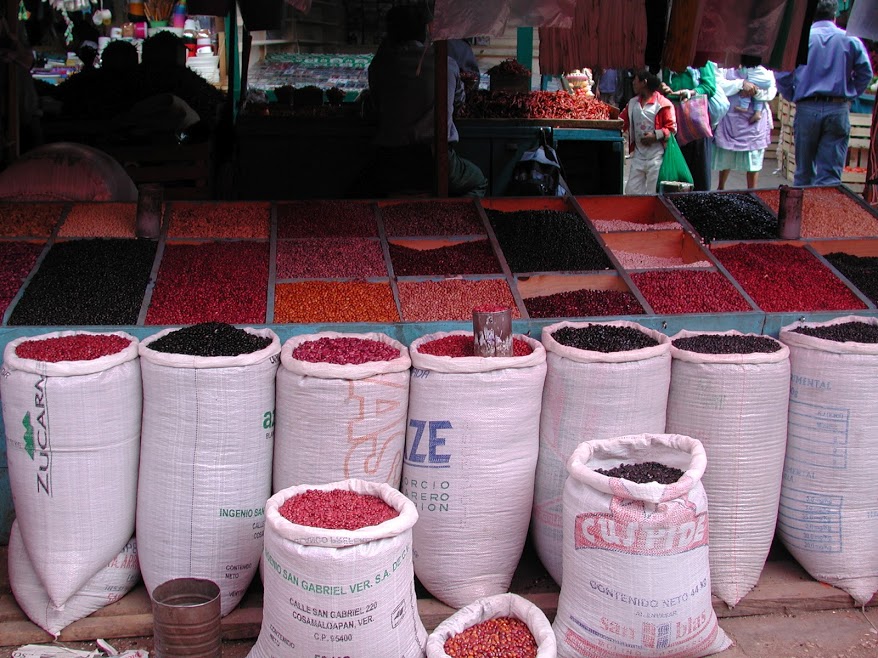San Cristóbal de las Casas, Chiapas, México
21 December 2001San Cristóbal is, without question, one of the most beautiful towns in Mexico. It’s also the ideal temperature for visiting Canadians, with the temperature hovering around 10 °C, and the humidity close to 100% during the daytime in winter. It’s cold, damp and cloudy. After months of scorching heat and humidity, I was in heaven. San Cristóbal makes an ideal base from which to do day-trips to the surrounding villages of San Juan Chamula and Zinacantán—indigenous villages comprising the Tzotzil and Tzeltal indigenous groups respectively.

In town, we met a law student named Luís who took a group of us to the villages. In San Juan Chamula, we first visited the shaman’s hut for the village, where we learned about the mix of Catholicism and traditional beliefs practised in the village. We then continued on to the village church which was probably the highlight of the visit. Seeing the mix of beliefs being practised there was incredible: everything from prayers to the Catholic saints to burning incense to chicken sacrifices and ceremonial purgings. Photography isn’t allowed in the church and out of respect to the Chamulans, we won’t describe everything in detail on the web, but suffice to say that it was an incredibly worthwhile visit.
Zinacantán is only a few kilometres away, but the villagers speak an entirely different language, Tzeltal. Here, the church is much more traditional, although most villagers still maintain strong ties to traditional indigenous beliefs, such as worshipping the Earth Lord and placing a strong emphasis on the interpretation of dreams. For a more detailed look at the beliefs and culture of the people of Zinacantán, we’d suggest Dreams and Stories from the People of the Bat by Robert Laughlin. This book is a collection of dreams and their interpretations as told by the villagers of Zinacantán, as well as a series of short stories passed from generation to generation in the village.
The town also produces many traditional handicrafts typical of Chiapas: blankets, clothing, dolls, etc. The villagers take these to San Cristóbal to sell them at the markets and on the street. The textiles are all made from hand, from the thread, to hand-weaving and embroidering. Typically, a medium-sized blanket takes two to three weeks to produce.

Back in San Cristóbal, we spent a few days visiting the markets and wandering around town trying out the local food before heading back north for Palenque again. On our way out of town we noticed a small shanty-town suburb in a gravel pit. On a big yellow arch, bold black letters declared the name of the colonia: Sal Si Puedes, ‘Get Out If You Can’. Just past this is the massive military encampment that has been in place since 1994 when the EZLN (Zapatista Liberation Army) overthrew and occupied the town before being driven out by reinforcements sent in, causing a bloodbath. There is a lot less tension now than there was then, but the Zapatistas still have incredibly high support in the villages just outside of town. The Mexican government under Vincente Fox has been much more responsive to indigenous peoples than previous governments have been, although in recent months this seems to be less and less the case. There’s still a lot of work to do before the indigenous groups in Mexico are able to live in conditions similar to the rest of the population. Most people in the villages still lack food, clothing and (non-dirt) floors in their houses, let alone running water and electricity. And although Chiapas produces more electricity than any other state, less than half the population has electricity in its home.